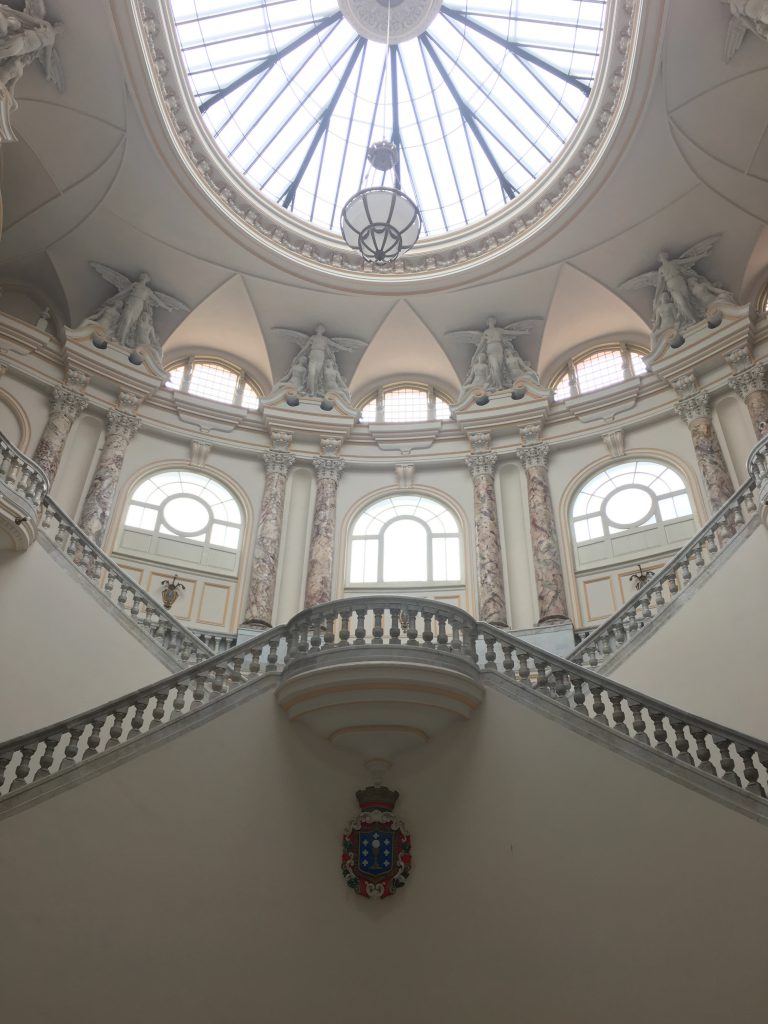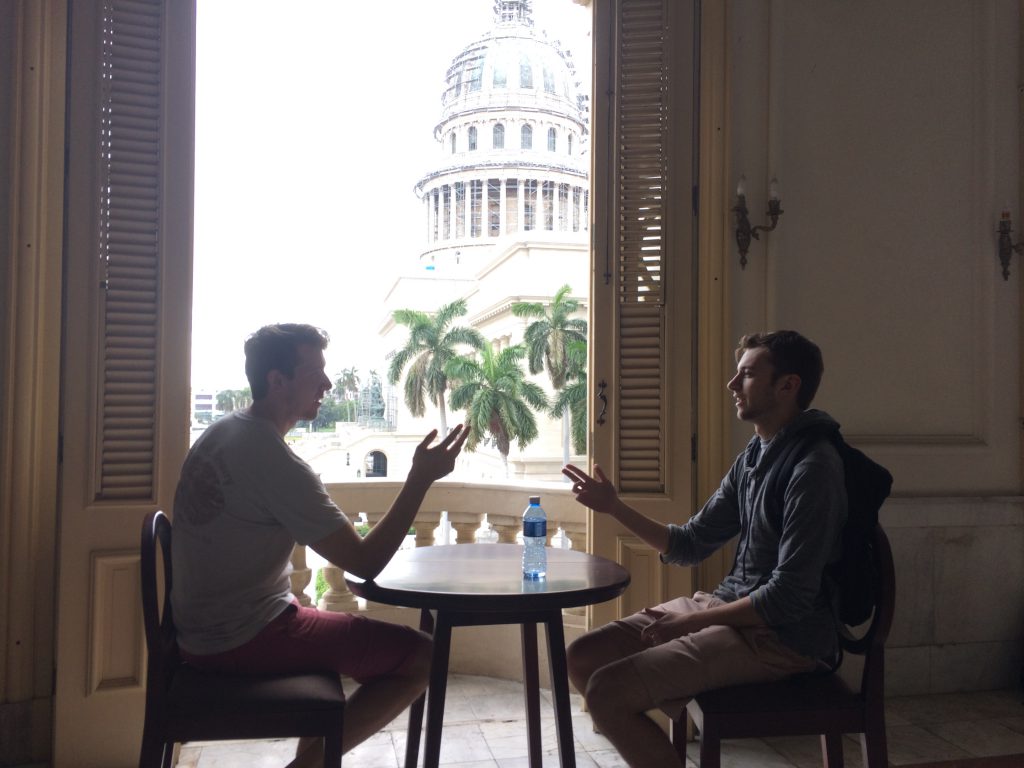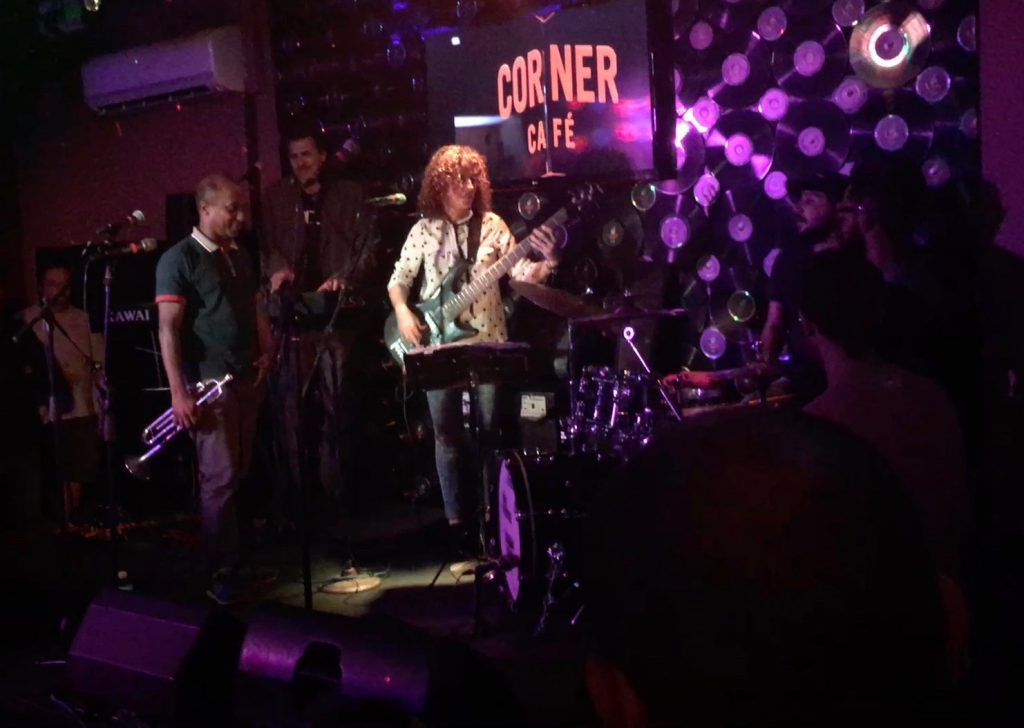
Gran Teatro de la Habana
To begin our 9th day of adventures in Cuba, we gathered at Carlos’ residencia for breakfast. The breakfast included toast with guava jam (my favorite fruit), banana, watermelon, and pineapple juice. After the meal, we departed for Havana Vieja to visit the Gran Teatro de la Habana.
The theater, designed for an audience of 1047, was constructed in 1837 and integrates several architectural styles including French, Belgian, and Czechoslovakian. Upon entering the building, I was overwhelmed by the grand staircase that leads up to the four balcony levels. The theater hosts world renowned musicians, plays, ballet performances, and even Barack Obama when he visited Cuba in 2013. I was amazed to learn that the theatre does not rely on any microphones for performance because of its acoustic design. With much excitement, our next destination was the Havana Club Rum Museum.

Havana Club was established in 1817, and has been the largest rum manufacturer in Cuba since Bacardi was forced to relocate to Puerto Rico. As it is very relevant to my studies in chemical engineering at UMass Lowell, I found this experience to be my favorite thus far. Making rum is both an art and a science. Traditionally, the science of the rum making process, as with all other alcoholic beverages, was a poorly understood phenomena. It was not until the advancement of our understanding of the microbial world, that consistent and quality rum manufacturing required collaboration between science and art. The unique flavor profile of Havana Club rum is a direct result of a well established recipe. Primarily, this recipe includes a proprietary yeast strain, sugar cane, and pure water. The process is broken up into the following major steps: milling, brewing, distillation, and aging.

Havana Club Rum Factory
The sugar cane is harvested from the plantations between November and May and transported via railroad to the mills where it is processed to molasses and sugar crystals. Next, the molasses is mixed with yeast and water in 22,000 liter stainless steel fermentation tanks. During fermentation, yeast metabolizes the sugars and converts them to ethanol and various aromatic products that contribute to the flavor profile of the rum. The product of fermentation, known as low wine, contains approximately 6% ABV, and is harvested after 24 hours. The low wine is then distilled in pot stills to both increase the alcohol content to a 75% fraction and a 95% and remove residues that negatively impact the taste of the product. Following distillation the distillate is passed through carbon filtration to remove fine impurities and subsequently aged in oak barrels. Last but not least, the group was taken to the tasting room for the one and only interactive exhibit. After raising my glass of Havana Club Añejo 7 Años for a cheers, I was struck by the taste of Cuban terroir. Initially, my nose was met with with a scent of roasted nuts and bitterness, and my palette with a sweet and toasty taste with notes of vanilla. This nationalized cuban beverage revolutionized my perception of rum. After the tasting, seven of us in the group went to Havana’s newest microbrewery for lunch, Cerveceria Antiguo Almacen. It was here that I had my first taste of Cuban private industry in the form of a Cuban sandwich.
Upon returning to the residencia for dinner after a busy day venturing the bustling streets of Havana Vieja, I learned of an opportunity for another round of salsa lessons. My tired legs were no match against my desire to absorb every drop of Cuban culture. To my surprise, the students from New York University also attending the lesson were at what I would call the “advanced level” and the instructor spoke not a word of English. Regardless, I was ready for the challenge. In this hour-long lesson I learned more about dance than I could have ever imagined.

Interactivo at Cafe Corner
To conclude the evening, I went out with some new friends from NYU to the Corner Cafe to see a local band called Interactivo. The performance and musicianship were out of this world! Interactivo, directed by keyboardist Roberto Carcasses, is described as a cuban fusion band, however it was like nothing I had ever heard. Their avant-garde style is a coalescence of jazz, timba, hip-hop, funk, and everything in-between. My experiences today validated my initial impression that Cuba is an enigma wrapped in a mystery stuffed into a Cuban sandwich.
